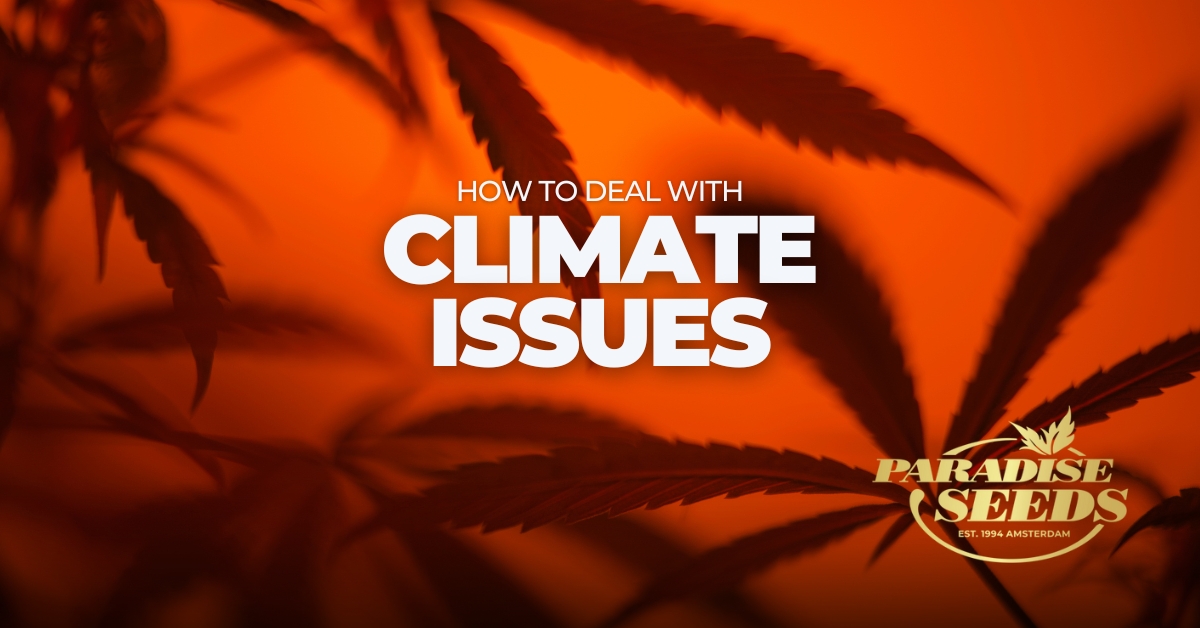If you have ever grown cannabis outside, having to rely on environmental conditions, then you will appreciate the huge role that cannabis climate issues play. Compare a plant which is grown under cloudy skies over a rainy summer with one that has had plenty of warmth and sunshine and spot the difference!
So it comes as no surprise that climate can have a significant effect on the health of the plant. Factors such as temperature, humidity, light, and air circulation will affect the way a plant grows, how healthy it is and of course how big it will yield when harvest time arrives.
The following article takes a look at the role that environmental factors play in the development of healthy plants, both indoor and outdoor, and proposes how some common issues can be mitigated.
Contents
Indoor vs Outdoor
In regards to climate there is a clear distinction between growing outdoors and growing in an indoor environment.
Indoor Growing
Growing indoors allows the grower to control all aspects of the growing environment, using specialised equipment. The set up costs are quickly compensated by the fact that an opitimized grow environment leads to better management resulting in higher yields.
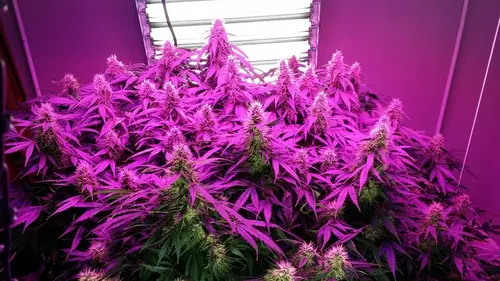
The type of equipment used to achieve this includes heaters, air conditioners, humidifiers, dehumidifiers, and ventilation systems to help maintain optimal temperature, humidity and air circulation. In addition, lighting systems provide the necessary light spectrum to maximize yields.
Outdoor Growing
In an Outdoor environment you have to make due with what nature gives you. Be it sunshine, rain or extreme temperatures. Examples of adapting to the weather include using shade cloths, mulching and proper watering practices during dry periods and high temperatures. When the weather is wet and windy, structures can be built to protect the plants from heavy rainfall.
Additionally, selecting varieties which have shown to be more adaptable to environmental fluctuations is advised when growing outdoors. One such type of plant are autoflowers, which are preferred by many northern/temperate region growers to be able to harvest before it becomes too cold and/or humid.
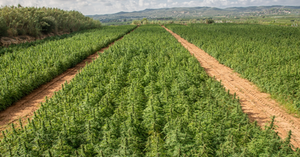
Greenhouse Growing
Greenhouses and polytunnels provide a hybrid growing environment between indoor and outdoor, giving plants protection from climate issues.
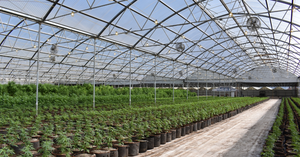
When growing inside a greenhouse, it is possible to provide additional heating and cooling, and use supplemental lighting to ‘extend’ daylight hours to keep plants in the vegetative state. Additional lighting can also compensate for low light days (i.e. when cloudy).
Common Climate Issues
The key to dealing with climate issues is to recognize the problem and quickly adjust the growing environment to mitigate the potential threat. Obviously this is easier said than done.
Heat stress in cannabis plants
Heat stress is an issue which occurs when temperatures exceed the optimal range, causing plants to struggle with excessive heat. Prolonged exposure to high temperatures can reduce photosynthesis, leading to poor plant development and even burnt leaves/flowers.
How to identify heat stress
Signs of heat stress include curled or wilting leaves, yellowing, and stunted growth.
Managing heat stress
To manage heat stress, ensuring proper ventilation and using cooling systems will help maintain a stable environment. Ensuring that grow lights are not too close to the top of the plants is a common practice to prevent heat stress in a grow room.
This reference article gives some good tips for growing cannabis in a hot climate, such as the Mediterranean.
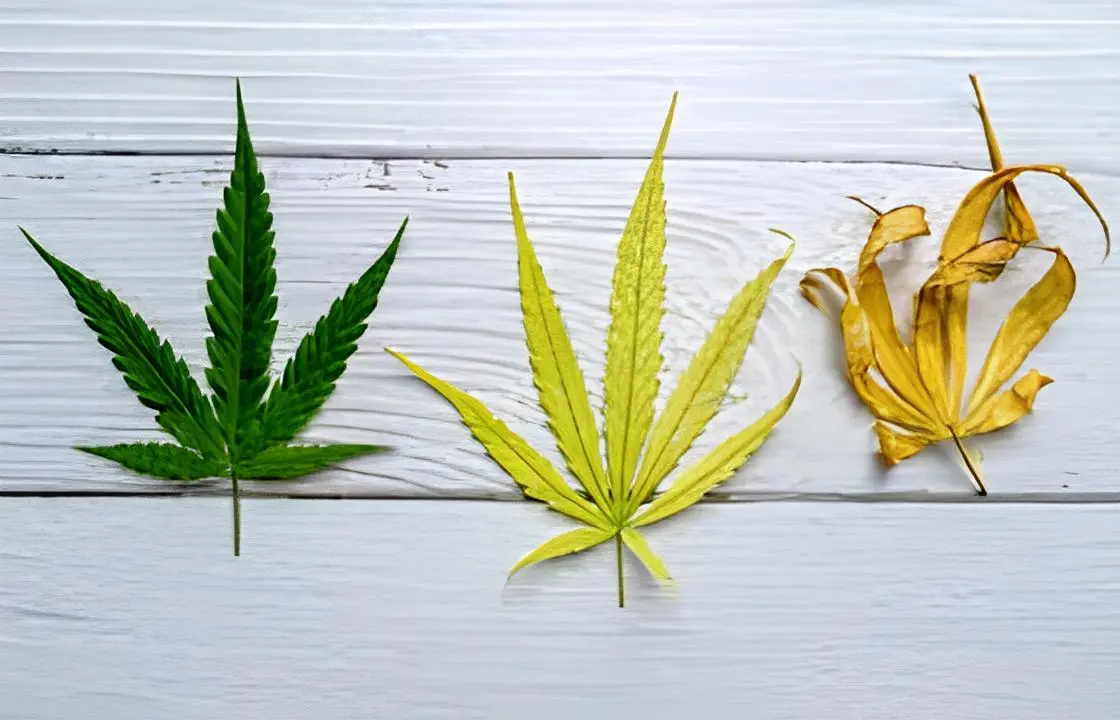
Cold stress in cannabis plants
Cold stress is a climate issue which occurs when temperatures drop below the ideal range mentioned above. If a plant is suffering from cold stress, it can stop taking up nutrients (Chlorosis) which weakens plants and can cause deficiencies.
How to identify cold stress
Symptoms include slow growth. In climates where temperature levels are significantly cooler, a sign of cold stress can be dark purple or blue colors developing on leaves of flowering plants or leaves can also fall off.
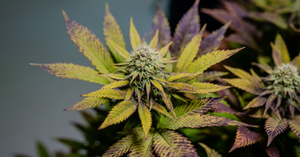
Managing cold stress
Prevention is the best solution for cold stress. If the grow space is prone to cold (i.e. an unheated attic) then invest in insulation or install a heater in the grow room.
For outdoor growing protective coverings can be used (such as garden fleece), and growing in pots allows for them to be moved indoors during cold spells.
Humidity issues
Maintaining appropriate humidity levels is vital. Both high and low humidity conditions can lead to reduced quality of harvest and in extreme cases lead to a crop being destroyed.
How to identify humidity problems
High humidity is responsible for mold, a common issue that can be highly devastating for crops. High humidity levels can also provide a breeding ground for pests such as fungus gnats and mealy bugs.
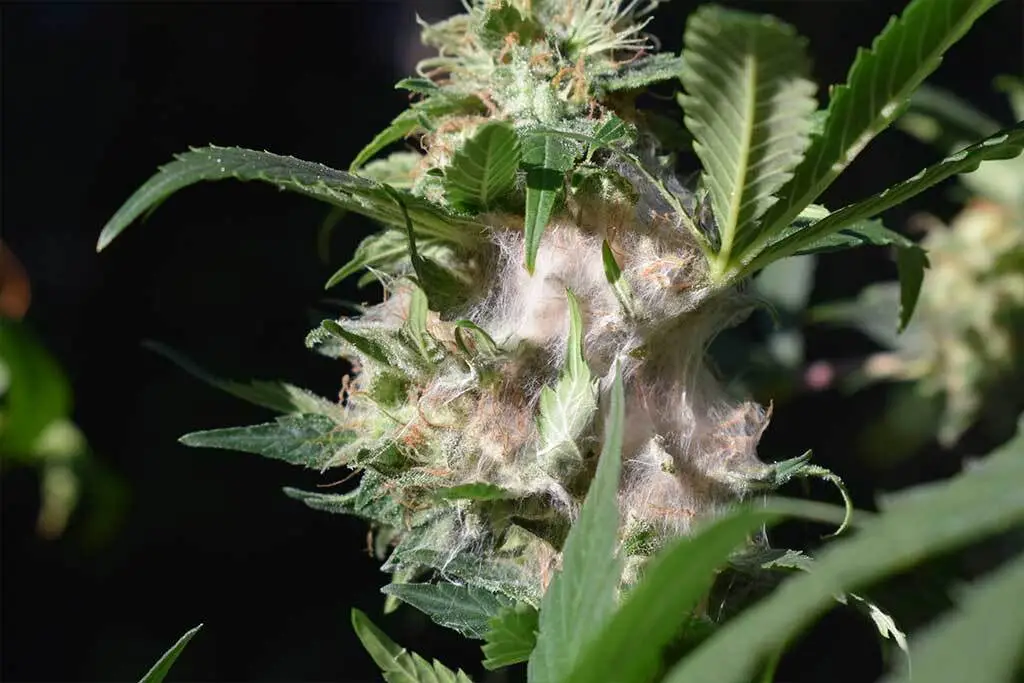
If the air is too dry plants lose essential moisture through an inability to photosynthesize effectively, leading to leaf curling and weak growth.
Managing humidity issues
The use of dehumidifiers and humidifiers in the indoor grow space can help with maintaining the optimal range. Ensuring good air circulation and monitoring humidity with hygrometers can help prevent humidity problems.
Temperature
The aim of temperature control during cultivation is to prevent extremes (either too hot or too cold).
Higher Temperatures: Can accelerate growth during the vegetative stage but may also increase the risk of heat stress, especially during flowering. It’s crucial to ensure that temperatures do not exceed the optimal range, as excessive heat can cause leaf burn, stunt growth, and reduce the potency of the buds.
Lower Temperatures: Are useful during flowering to enhance quality and mimic natural autumn conditions. However, temperatures that are too low can slow growth, affect photosynthesis, and lead to issues like nutrient lockout.
Optimal temperature ranges:
Seedling Stage: 24-27°C
Vegetative Stage: 24-27°C
Flowering Stage: 24-27°C
Late Flowering: 22-25°C
Humidity
The optimal relative humidity (RH) for cannabis plants varies depending on their stage of growth. Managing RH properly throughout the plant’s life cycle is crucial for maintaining plant health, optimizing growth, and maximizing yield and quality.
The ideal RH levels for each stage change and these are our recommendations:
Seedling Stage: 80-90%
Vegetative Stage: 60-80%
Flowering Stage: 50-60%
Late Flowering: 40-50%
Lighting issues
Light is another critical factor for cannabis cultivation. Cannabis plants require light for photosynthesis, particularly during the vegetative and flowering stages.
Obvious light related issues can include heat stress from badly positioned lights and light leaks (for example holes in a grow tent) which interrupt the light cycle and can lead to plants turning hermie (hermaphrodite).
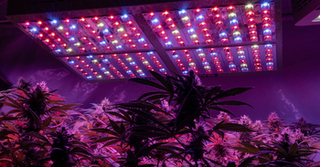
However, lighting management can also lead to issues which are less obvious – for example stretching as a result of low R:FR (Red to Far Red Ratio in LED spectra).
Utilizing lighting effectively – such as ensuring high light intensity during flowering can boost yields. See this article for more tips on optimizing crops through the management of LED lights.
Outdoor grow lighting issues
For outdoor grows, at least six hours of direct sunlight per day is ideal. For the home grower, this is not something that can easily be controlled unfortunately, which is why Autos are preferred by growers cultivating in sun-shy parts of the world.
For those growing in glass houses and polytunnels, there are options to add additional lighting to compensate for a lack of sunlight, although inevitably this adds to cost.
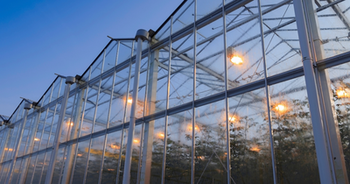
Air Circulation
Optimal air circulation is crucial for cannabis plants at every stage of their life cycle. Proper air movement helps regulate temperature, humidity, and CO₂ levels, reduces the risk of pests and diseases, and promotes strong stem growth.
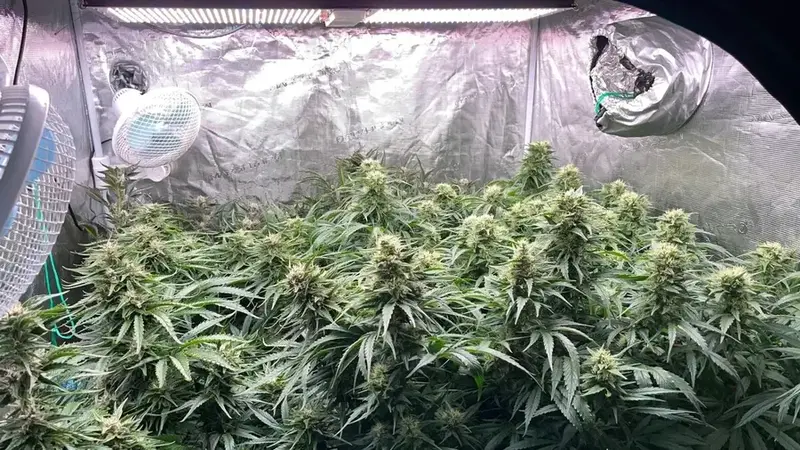
CO2
CO2 (carbon dioxide) is a factor in optimizing crops through climate control and is a popular supplement used by growers operating in a controlled environment. CO2 generators are used for this purpose.
For a comprehensive guide, with detailed explanation of various environmental factors, please consult our companion article Ideal cannabis climate settings.
Tools and techniques to manage cannabis climate issues
Temperature Control
The use of thermometers and climate controllers is a must to maintain the right temperature in an indoor grow setup and give you valuable information to adjust your climate.
Humidity Control
A hygrometer is an essential piece for accurately measuring humidity levels. Humidifiers can be used to increase humidity, while dehumidifiers can help lower it. Moisture meters are also a useful piece of equipment to measure water content in soil.
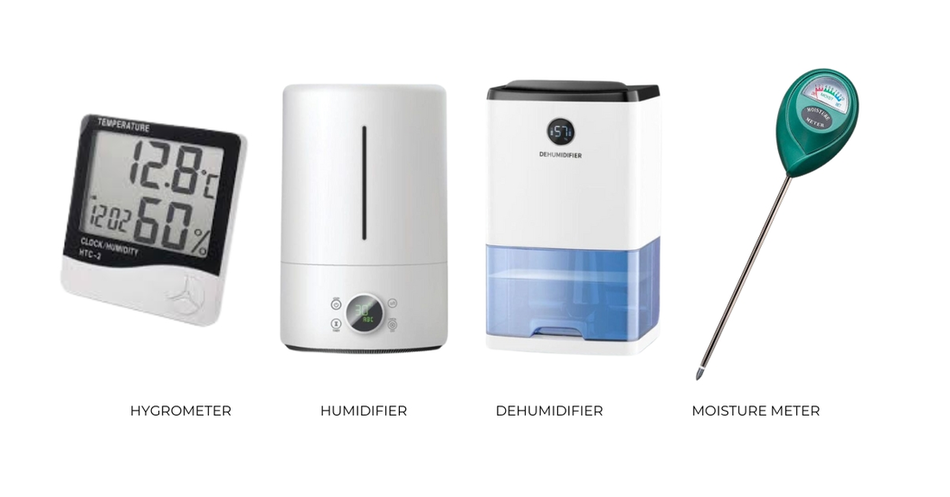
Lighting Solutions
A variety of cannabis grow lights including LEDs, HPS (High-Pressure Sodium), and CFL (Compact Fluorescent Lights) ensure the right light environment.
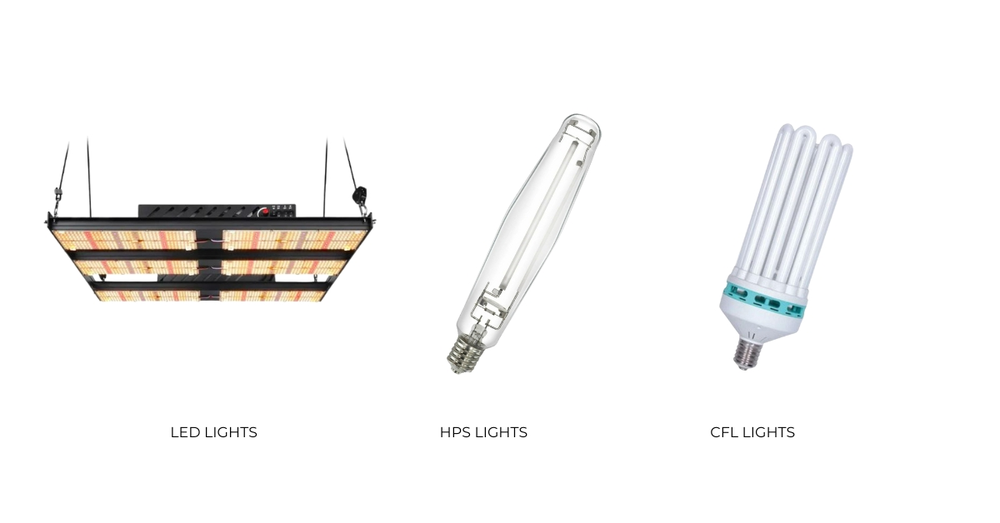
Ventilation Systems
Good air circulation plays a key role in combating cannabis climate issues such as mold.
Oscillating fans are a must for any grow room to aid in maintaining complementary temperature and keeping damp air from stagnating.
Extractor fans and air filters ensure air is removed and fresh air is brought into the grow space. The aim should be to keep air continuously moving in order to create an inhospitable environment for pests and diseases.
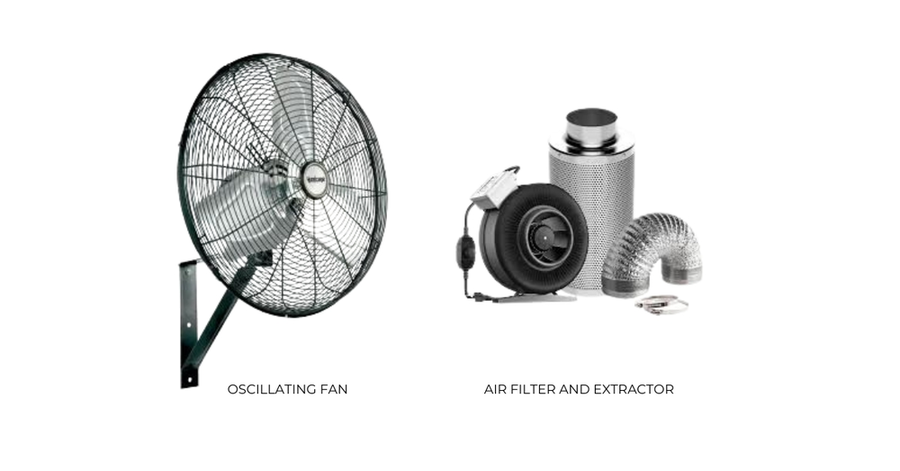
Monitor the grow room
Having controls in place, is only the start. In order to ensure all the tools are doing their job it is vital to keep monitoring their performance in the grow room to keep on top of cannabis climate issues.
Growers should be regularly monitoring temperature, humidity, light levels, and air circulation within their growing environment. Tools such as digital thermometers, hygrometers, and light meters can provide accurate real-time data.
Successful growers are those who are able to prevent issues by observing their crops and looking for any changes that indicate a problem might be developing.
As previously noted, plants will give visual signs, in the form of changing leaf colors or changes in their growth.
Symptoms should always be cross referenced with other possible causes (such as deficiencies).
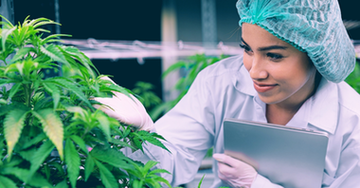
Conclusion
Cannabis climate issues can be boiled down to temperature, light, humidity, heat and cold related environmental factors.
As an indoor grow space is a controlled environment, one can draw two conclusions from problems relating to any of these factors. The first is that existing climate control measures are not functioning as they should. The second, is that with a successful diagnosis of the problem, rectification is possible.
In an outdoor space it is impossible to control climate conditions, so a grower has to develop a pragmatism and deal with the environment around them as best as they can. This consists of introducing measures into the grow to mitigate the effects of the elements (such as intense sun, heat, wind and rain) or growing in pots to provide more flexibility.
What is without doubt is that with insufficient control, climate can lead to a whole host of threats and attacks. Good environmental management (where possible) and a quick response to issues is required to preserve the health of a cannabis crop.


